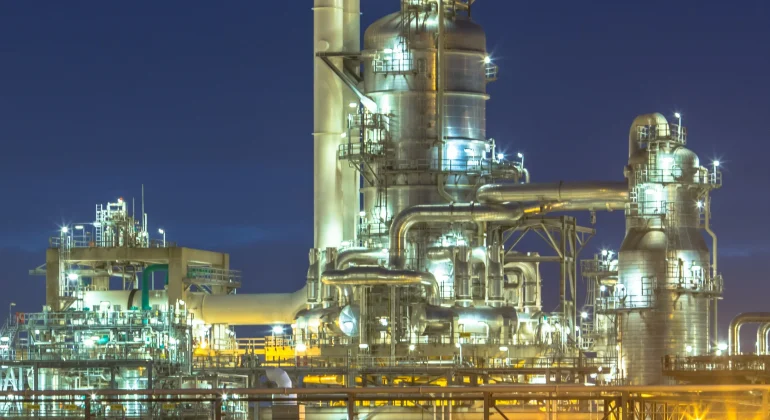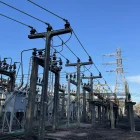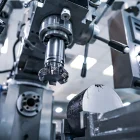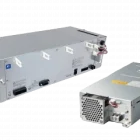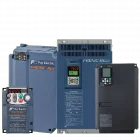What Is a Flowmeter?
Ever wondered how much water flows through a pipe or how much gas passes through a pipeline? That is where a flowmeter comes in. It is a device that measures the rate at which a fluid (liquid or gas) moves through a given area. Think of it as a traffic counter for fluids. Flowmeters come in various types, each with its unique method of measurement. These include:
- Mass Flowmeters: Measure the mass of fluid passing through.
- Volume Flowmeters: Measure the volume of fluid passing through.
- Velocity Flowmeters: Measure the speed of the fluid.
Flowmeters are essential in industries such as water treatment, chemical processing, and simpler applications such as your home’s water meter.
Pro Tip: When selecting a flowmeter, consider factors such as the type of fluid, the desired accuracy, the fluid’s pressure and temperature, and the overall budget.
What does a flow monitor do?
A flow monitor is essentially a system that continuously tracks and displays fluid flow data. It combines a flowmeter with other components like sensors, transmitters, and a display or recording device. This allows you to:
- Monitor flow rates in real-time: Keep a close eye on how much fluid is moving through the system.
- Detect leaks and blockages: Identify issues that may disrupt flow and cause problems.
- Control processes: Adjust flow rates to optimize production or conserve resources.
- Generate reports: Gather data for analysis and troubleshooting.
Flow monitors are crucial in industries where precise flow control is critical, such as in pipelines, refineries, and pharmaceutical manufacturing.
What Is The Principle of Flowmeter?
Flowmeters use various principles to measure the rate at which fluids (liquids or gases) move. Some common types include:
- Differential Pressure: Measures the pressure drop across an obstruction (e.g., an orifice plate) in the flow path to determine the flow rate.
- Variable Area: As the flow increases, a float rises within a tapered tube, directly indicating the flow rate.
- Electromagnetic: This type generates a voltage in a conductive fluid moving through a magnetic field, with the voltage proportional to the flow velocity.
- Vortex Shedding: As fluid moves, it creates vortices. A sensor detects the frequency of these vortices, which is proportional to the flow rate.
Ultrasonic: By measuring the time it takes for ultrasonic pulses to travel with and against the flow, this method calculates the flow velocity.
Types and Uses
There are a variety of flowmeters available:
- Orifice Plates – Due to their simplicity and cost-effectiveness, these are widely used in various industries. However, they can cause pressure loss.
- Venturi Meters – These minimize pressure loss compared to orifice plates, making them suitable for applications where maintaining pressure is crucial. They are more expensive.
- Rotameters – They offer a simple and visual way to monitor flow rate but may have limited accuracy. They are commonly used in educational settings and applications where precise flow measurement is not critical, such as low-pressure applications.
- Electromagnetic Flowmeters – These are widely used in industries such as water treatment and chemical processing due to their reliability and durability as they do not have moving parts and provide accurate measurements for conductive fluids.
- Turbine Flowmeters – These offer high accuracy in flow measurement but can be sensitive to flow disturbances. They are commonly used in applications where precise metering of fluids is needed.
- Coriolis Mass Flowmeters – These directly measure mass flow rate with high accuracy but are generally more expensive compared to other flowmeter types. They are ideal for applications demanding precise mass measurement of fluids.
Pro Tip: Regular flow meter calibration and maintenance are crucial to ensure accurate and reliable measurements.
What is the most commonly used flowmeter?
Orifice plates are among the most common due to their simplicity, low cost, and wide availability.
Which type of flowmeter is most accurate?
Coriolis mass flow meters are generally considered the most accurate type of flow meter, providing exact measurements of mass flow rate.
How Does a Flowmeter Transmitter Work?
A flowmeter transmitter converts the flow signal from the flowmeter (such as pressure differential, voltage) into a standardized electrical signal (typically 4-20 mA). This signal can then be transmitted to a control system, data logger, or display device for monitoring, control, and data acquisition.
How Does a Flowmeter Transmitter Work?
A flowmeter transmitter converts the flow signal from the flowmeter (such as pressure differential, voltage) into a standardized electrical signal (typically 4-20 mA). This signal can then be transmitted to a control system, data logger, or display device for monitoring, control, and data acquisition.
What is a flow machine?
A flow machine is a device that moves fluids. This includes pumps, compressors, fans, and turbines. Flow machines are essential in various industries for transporting, compressing, and moving fluids
What is the purpose of the flowmeter regulator?
A flow meter regulator controls a fluid’s flow rate. It can maintain a constant flow rate, limit the maximum flow rate, or adjust it as needed.
What is the purpose of the flowmeter regulator?
A flow meter regulator controls a fluid’s flow rate. It can maintain a constant flow rate, limit the maximum flow rate, or adjust it as needed.
What does screen flow mean?
Screen flow refers to the flow of data or information across a digital display, such as a computer screen or a mobile device. It encompasses how users interact with and navigate through information presented on the screen.
How do you test Screen Flow?
Testing screen flow involves evaluating how users interact with the screen interface. This can include:
- Usability testing: Observing users as they interact with the screen and gathering feedback.
- A/B testing: Comparing different screen designs to see which one performs better.
- Eye-tracking studies: Analyzing where users focus their attention on the screen.
- User surveys: Gathering user feedback about their experience using the screen interface.
What is a flip flow screen?
A flip flow screen is a type of vibrating screen used to separate materials based on size. It utilizes a rapid, back-and-forth motion to effectively screen materials.
What is the difference between Screen Flow and Process Flow?
- Screen Flow: Focuses on the user’s interaction with a digital screen interface. It deals with how information is presented and navigated on the screen.
- Process Flow: Refers to the sequence of steps involved in a particular process or operation. It describes the overall workflow and how different tasks are interconnected.
FAQs
What are the common units for measuring flow rate?
The common units used for measuring are:
- Volume flow rate: gallons per minute (GPM), liters per second (L/s), cubic meters per hour (m³/h).
- Mass flow rate: kilograms per second (kg/s), pounds per hour (lb/h).
How do I choose the right size of flowmeter for my application?
The different factors to consider include pipe size (as the flow meter must fit within the pipe), flow rate range (the flow meter should accurately measure the expected flow range), and fluid properties (density, viscosity, temperature, and corrosivity can influence the choice of flow meter).
What are the potential sources of error in flowmeter measurements?
Potential sources of error include installation errors, pipe vibrations, fluid conditions, and calibration drift.
Can flow meters be used for liquids only?
Potential sources of error include installation errors, pipe vibrations, fluid conditions, and calibration drift.
What is the difference between a flow meter and a flow sensor?
A flow meter measures the rate of fluid flow while a flow sensor is a component within a flow meter that detects changes in fluid flow, such as velocity and pressure drops.
About Fuji Electric Sales Philippines, Inc.
As a subsidiary of Japan-based Fuji Electric Co., Ltd., Fuji Electric Sales Philippines, Inc. handles the sales, promotion, and support of Fuji Electric products in the Philippines. The company focuses on power electronics, automation, and energy-efficient technologies that help advance industries and strengthen the nation’s electrical infrastructure.
Looking for dependable and quick flowmeter-related answers to your concerns? We are here for you. Ask our experts for professional guidance.
Rickson Manalo
Assistant Sales Manager
0917-115 6102



